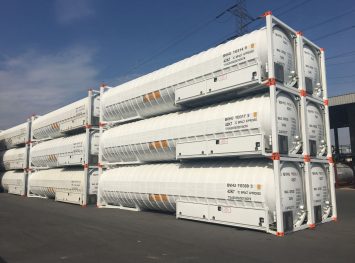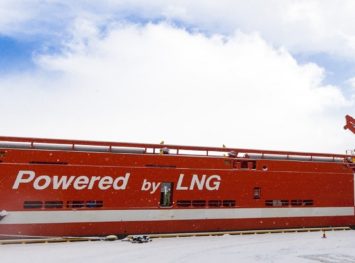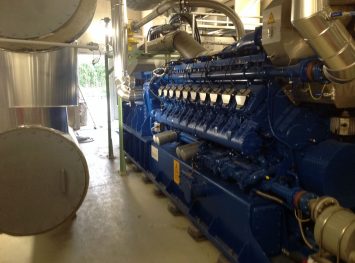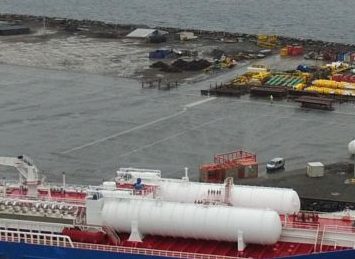
Safety
Liquefied natural gas (LNG) is a hazardous liquid. However, when handled properly, LNG can be safely stored, distributed and dispensed throughout the supply chain in an efficient manner. The LNG industry has a solid long term safety record.
LNG safety risks
LNG is cryogenically cooled natural gas which is liquefied to reduce the volume for shipping and storage. The liquid is typically stored at temperatures between -162 and -155°C at which the saturated vapor pressure will be between 1 to 10 bar. LNG is primarily methane, but can contain up to 10% ethane and propane.
As mentioned, natural gas is flammable in certain mixtures with air, typically 5 to 12%. As a result, if LNG is released from its containment vessel and vaporizes, the resulting vapor cloud of natural gas can ignite. In this regard, LNG is no different than other common petroleum fuels such as gasoline, kerosene and LPG. However, if no ignition source is present LNG will dissipate completely as it is lighter than air. In liquid state, LNG is highly unlikely to ignite.
Because LNG is a cryogenic liquid, there is a risk of cold burns if it is in contact with skin. Therefore, LNG should be stored, transported and handled using cryogenic equipment compliant with applicable norms and regulations. To minimize the risks further, Personal Protective Equipment (PPE) should be worn by personnel conducting transfer activities (i.e., filling an LNG road tanker or truck). In this regard, the hazards of LNG handling are very similar to those of common industrial gasses like liquid Nitrogen (LIN), Argon (LAR) and Oxygen (LOX).
Finally, an LNG vapor cloud can be hazardous if it is allowed to collect in a confined space. Because LNG can replace oxygen in a confined space, there is a potential risk of asphyxiation. In order to prevent such risks, installations should be designed to prevent accumulation of LNG vapor clouds. Moreover, when handling LNG, personnel should carry gas detectors or explosimeters.
LNG emergency response training
Together Barents Naturgass and CCS have extensive experience with emergency response training of local fire brigades and other (public) stakeholders. We organizes training sessions for own staff as well as third parties. These training sessions include a theoretical part to introduce people to the safety hazards of LNG as well as practical exercises with LNG spills and fires.
LNG personal protective equipment
It is advised to use the following Personal Protective Equipment (PPE) when working with cryogenic gases and liquids:
- LNG Overall with long sleeves (NEN-EN 342:2004/C1:2008 cold)
- Safety Goggle or Face shield (NEN-EN-166 Eye protection)
- Safety Shoes (NEN-EN-ISO 20345 Safety Shoes (eg Gate >=S2)
- Cryogenic gloves (EN511 protective gloves against cold)
- Helmet (NEN-EN 397 + A1 Safety Helmet, best in combination with neck protection)
- Gas detector
LNG MSDS
A material safety data sheet (MSDS) is an important part of product stewardship, safety & health and spill-handling procedures. The MSDS is used for cataloging information on chemicals, chemical compounds, and chemical mixtures. In addition, MSDS information may include instructions for the safe use and potential hazards associated with a particular material or product. The MSDS should be available for reference in the area where the chemicals are being stored or in use. Moreover, the MSDS includes labeling requirements on the basis of health and environmental risks. Labels can include hazard symbols such as the European Union standard symbols.
It is important to use an MSDS specific to both country and supplier, as the same product can have different formulations in different countries. An example can be found here.




